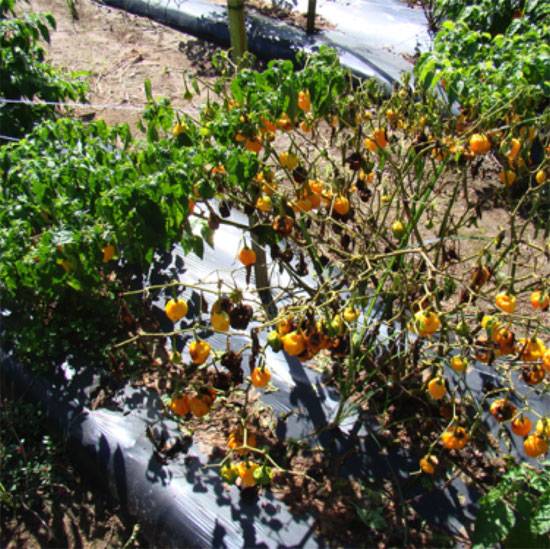Bacterial wilt is a serious disease affecting capsicum (bell peppers) and various pepper species. It is caused by soil-infected bacterial strains and can lead to the rapid death of plants. The disease is known for its "green wilting" symptom, where the leaves remain green while wilting, making it distinct from other wilting diseases. Below are the key points regarding bacterial wilt in capsicum:
1. Affected Species
- Many pepper species, including bell peppers, are susceptible to bacterial wilt.
2. Key Symptom: Green Wilting
- The first sign of bacterial wilt is "green wilting," where the leaves wilt but remain green.
- The disease eventually leads to the complete death of the infected plant.
3. Plant Response
- In bell peppers, the plant may completely collapse.
- In scotch bonnets (Capsicum chinense), the stem and branches stay dry despite the infection.
4. Field Impact
- The disease usually affects scattered areas in the field but can cause widespread damage if contaminated water is involved.
5. Diagnosis
- A bacterial streaming test can confirm the disease, where thick bacterial streams are visible from a cut stem.
- Bacterial ooze may also be observed from decayed or cut stems and branches when squeezed.
These tests provide quick and effective ways to identify bacterial wilt in field conditions, helping farmers make timely decisions to manage the disease.










